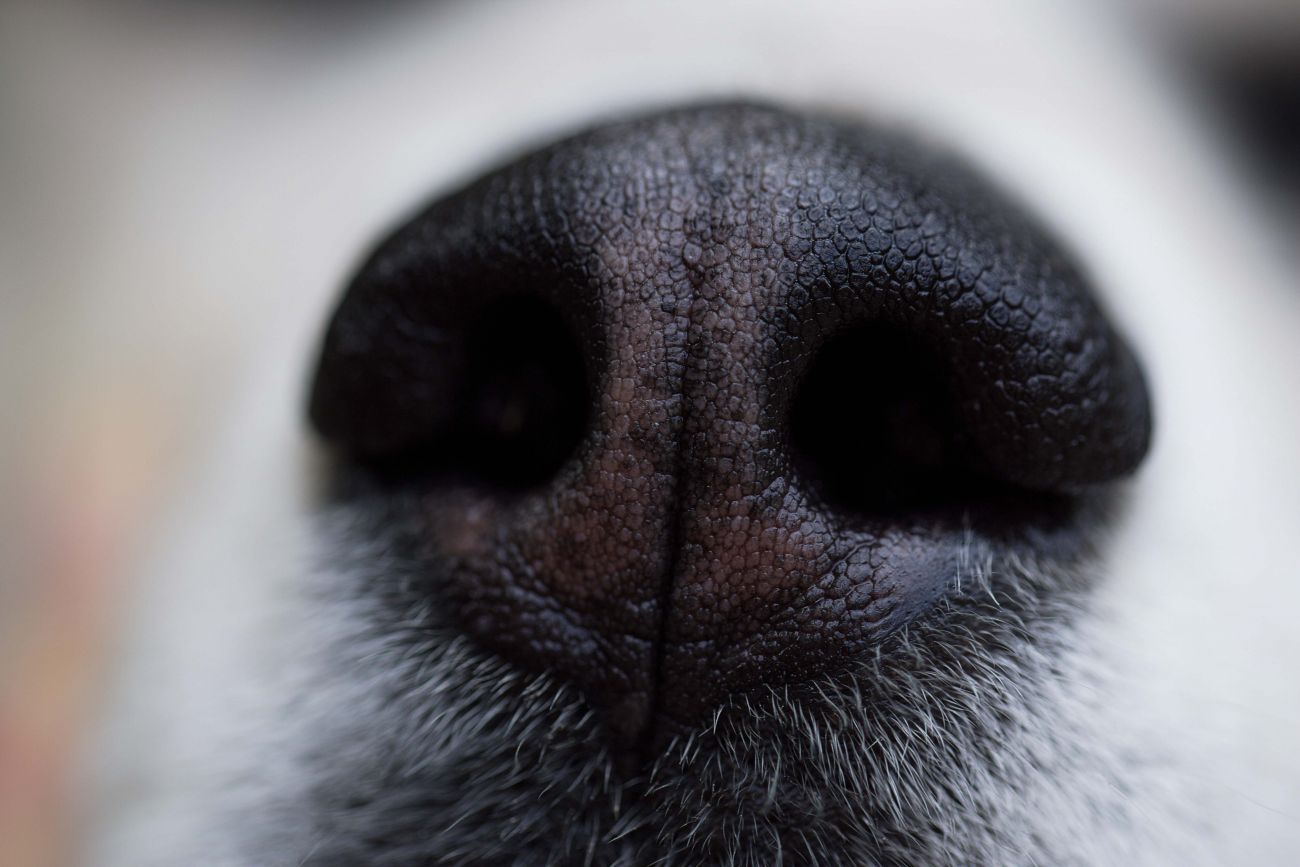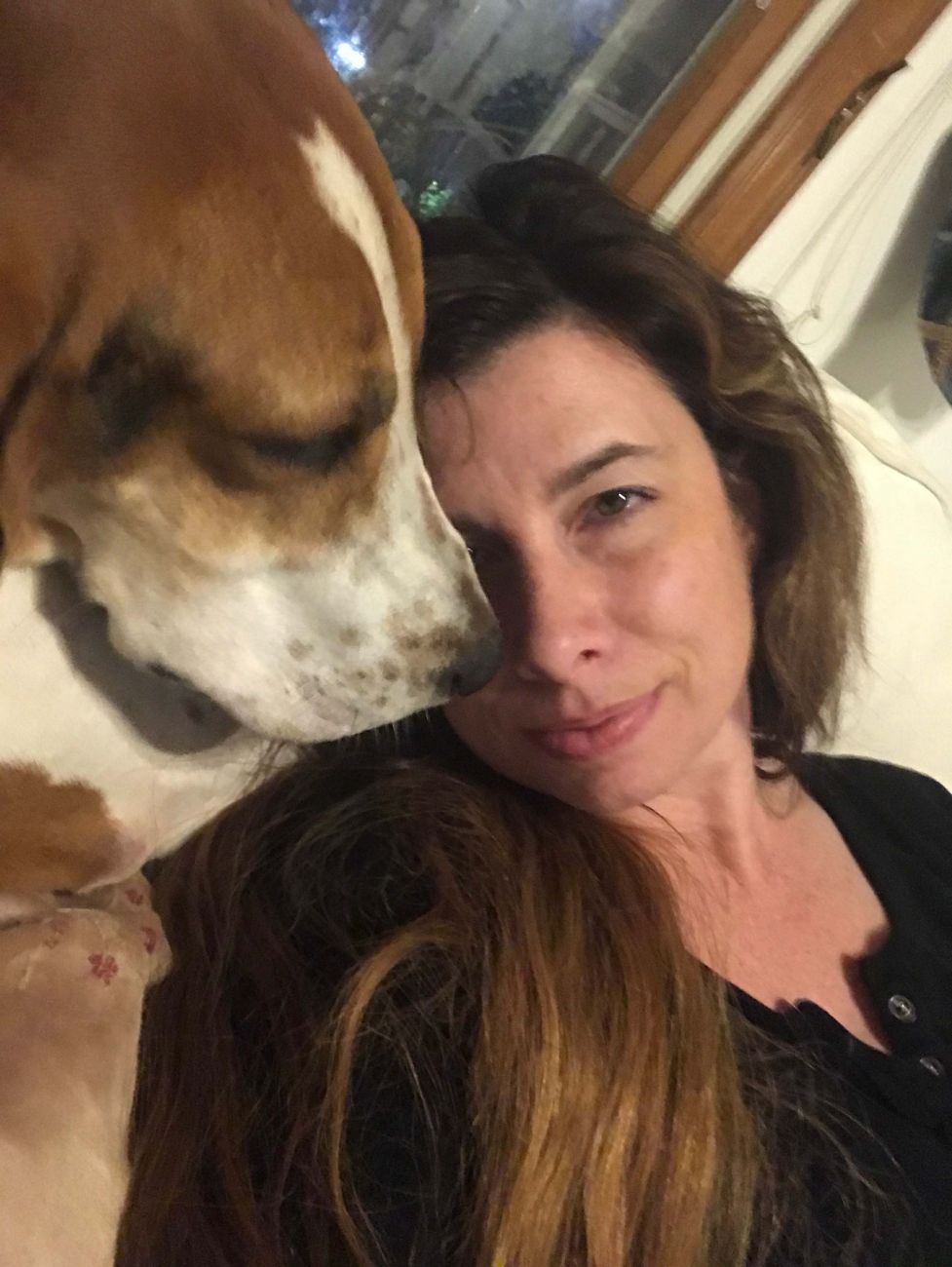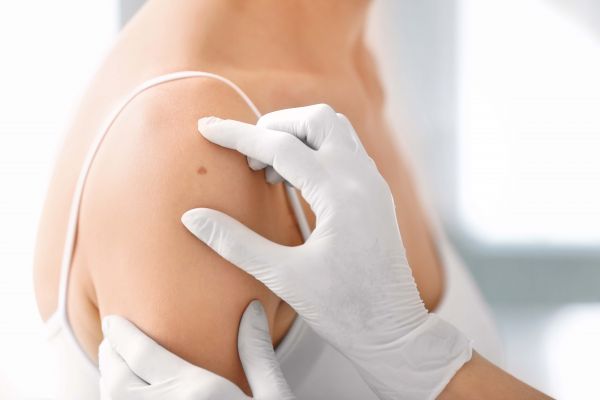We have plenty of reasons to love dogs. They offer loyalty, comfort, service and companionship. Therapy dogs, like those at Roswell Park, provide a welcome distraction and emotional support to patients and their families on stressful days. Thanks to their amazing sense of smell and their trainability, dogs can learn to detect hidden drugs, bombs or cadavers and sense some medical conditions in humans, such as diabetes distress and oncoming seizures.
Now, mounting evidence suggests that dogs can also play a part, directly or indirectly, in detecting cancer in humans.
The Science Behind a Dog’s Sniffer
In her book Nose of a Dog, research scientist Alexandra Horowitz notes that “most of what the dog sees and knows comes through his nose.” Depending on the breed, a dog’s nose has around 125 million to 300 million scent glands, while a human’s nose has around five million scent glands. That means that a dog’s sense of smell is around 1,000 to 100,000 times more sensitive than a human’s.
Research indicates that dogs are capable of detecting tiny traces of odors created by different diseases. How tiny? Around one part per trillion, or the equivalent of one teaspoon of sugar in two Olympic-sized swimming pools.
How Do Dogs Act When They Smell Cancer?
“The ability of dogs to detect melanoma, a potentially fatal skin cancer, has been formally studied and confirmed,” says Ashley Stenzel, PhD, a Roswell Park postdoctoral fellow. Dr. Stenzel notes that in case studies, dogs persistently sniffed, licked and nipped at melanoma lesions on their owners’ skin, even through clothing, prompting the owners to identify the cancerous sites and seek care from clinicians. “Given that melanoma is a cancer presenting with lesions on the skin, it would be logical for dogs to be able to detect a lesion,” Dr. Stenzel says. “However, the use of canine olfactory detection has also been studied in other examples of cancer.”
In one widely noted anecdotal case, Lauren Gauthier, founder of Magic's Mission hound rescue organization, reported that Victoria, her adopted Treeing Walker Hound, “persistently sniffed and stared at what seemed like a pimple on my right nostril. It was so odd and she was so persistent that I finally decided to have it checked out.” The "bump" ended up being basal cell carcinoma, a common type of skin cancer. “As soon as I had Mohs surgery to remove the cancer, Victoria’s strange behavior stopped.”
Claire Guest, MSc, DHP, BCAh, CEO of Medical Detection Dogs, recalls that Daisy, her Fox Red Labrador, who is trained to sniff out cancer in the lab, kept staring and pawing at her chest. While trying to decipher Daisy’s behavior, Dr. Guest discovered a lump that turned out to be a malignant tumor deep in her breast.
In Being a Dog, Horowitz describes a Dachshund puppy that repeatedly sniffed her owner’s armpit. Eventually the woman found a lump in her armpit, leading to a breast cancer diagnosis.
Can Dogs Be Trained to Detect Cancer?
Possibly. Some organizations researching this include the University of Pennsylvania Veterinary School’s Working Dog Center and Medical Detection Dogs, in the United Kingdom. In various experiments, dogs have detected:
- Breast cancer and lung cancer, by sniffing the breath of patients. In these studies, it is thought that the dogs sensed biochemical differences in the exhalation of subjects with diagnosed cancer and subjects with no known cancer.
- Bladder cancer and prostate cancer, by sniffing the urine of patients.
- Colorectal cancer, by sniffing patients' exhaled breathing and their stool samples.
- Ovarian tumors, by sniffing patient tumor samples and blood samples.
- Cervical cancer, by sniffing patient biopsy samples.
Never miss another Cancer Talk blog!
Sign up to receive our monthly Cancer Talk e-newsletter.
Sign up!Will Doctors Use Dogs to Help Detect Cancer Anytime Soon?
Probably not. “While the idea of using dogs to detect cancer is attractive, given that it is noninvasive, until much more research and training is done, it is not yet accurate enough, nor practical,” says Dr. Stenzel.
“For one thing, the dogs can’t tell us exactly what they are smelling,” says Kirsten Moysich, PhD, MS, Distinguished Professor of Oncology and Epidemiology at Roswell Park. “We know that cancer causes a state of disarray in cells. There is growing evidence that elevated levels of a ‘signature’ of volatile organic compounds (VOCs), also known as odorants, are associated with disease growth and the accompanying accumulation of cell debris and decomposing dead tissue.”
One promising area of research aims to develop sensors and nanotechnology that mimic dogs’ highly developed sense of smell to detect minute odorant changes in the cells of cancer patients.
- In a current clinical trial, Israel Institute of Technology is testing two types of its NA-NOSE “electronic noses” to validate the efficacy of the devices to detect specific odorants in the breath of patients with various types of malignant tumors.
- Medical Detection Dogs and the Massachusetts Institute of Technology’s Center for Bits and Atoms are working together to develop ways that dogs can teach artificial-intelligence technology to recognize the smell of prostate cancer.
- At the University of Pennsylvania Veterinary School’s Working Dog Center, where trained dogs were able to detect minute quantities of the odorants given off by ovarian cancer tumors, experts in physics, chemistry and gynecology have teamed up to develop electronic devices to detect and identify these odorants. “There is currently no reliable early screening test for ovarian cancer,” says Dr. Moysich. “So if this research eventually translates into a device that can detect ovarian cancer at earlier stages, when it is much more treatable, that would be huge.”
But, until developments like these are perfected, Drs. Moysich and Stenzel offer this advice regarding cancer detection. “I wouldn’t necessarily leave all of my health screening to my dog,” Moysich says. “But if you or your dog notice something unusual about your body, be it a lump, a sore or an odor, have it checked out by a doctor.”
Or, as Lauren Gauthier puts it: “Pay close attention if your dog starts to intensely sniff and react to a certain part of your body. Your dog might know something that you don’t, so don’t brush their unusual behavior aside. I truly believe that Victoria saved my life.”





